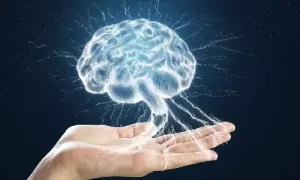
Orthopedic conditions such as arthritis, osteoporosis, fractures etc. are associated with pain and prolonged healing times. Pharmacological management and surgery are the only available treatment modalities in the management of such conditions. The side effects of conventional therapeutic modalities are well known and the core pathology is not addressed.
Among the new treatment modalities, magnetic resonance therapy is a promising non-invasive allied modality to physiotherapy and has the potential to gradually reduce the need for pharmacological therapy. Nuclear Magnetic Resonance Therapy that has been patented under the brand MBST is a well known technology used in diagnostics. Recently, the role of this therapy in orthopedic conditions has been assessed.
MBST results in regeneration of cartilage and stimulates bone formation. It is therefore a boon in cases of osteoporosis which is associated with higher risk of fractures due to reduced bone mineral density (BMD). When combined with vitamin D supplementation and exercise, good improvement has been reported in BMD of patients with osteoporosis.
MBST also provides instant pain relief in degenerative, rheumatic diseases. In addition, sports injuries also benefit from the therapy. MBST is based on the principle that metabolism of tissues in the human body is controlled by electric and magnetic fields. In health, our body regulates the regeneration of cells and tissues with own signals. However, in cases of tissue damage (such as cartilage or bone), there is interference in signaling mechanisms, which inhibits regeneration and repair. The end result is pain and reduced joint mobility, which interferes with daily living activites of the affected individual. The goal of MBST is to redirect the signals to the damaged area to normal and healthy form. This therapy stimulates cells in our body and reactivates regeneration of cartilage, ligaments and other tissues, thereby reducing pain and improving joint mobility.
The proposed mechanism of action of MBST is the stimulation of hydrogen protons using radio waves, which creates a “high energy” state. This energy is then released in the same manner as in MRI and is absorbed by the surrounding tissue. On absorption of energy by the tissue, reactivation of regeneration of cells is initiated.
The chief advantage of MBST is that the therapy works at a cellular level; therefore, it addresses the underlying pathology and results in effective, long-term positive outcomes. However, continuation of physiotherapy is mandatory to aid in return of muscle memory to its pre-injured state.Conditions that benefit through MBST include: Rheumatoid arthritis, Osteoarthritis, Osteoporosis, Sports injuries, Degenerative conditions of the spine/vertebral columns, and many more.








